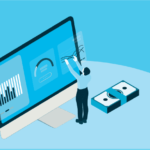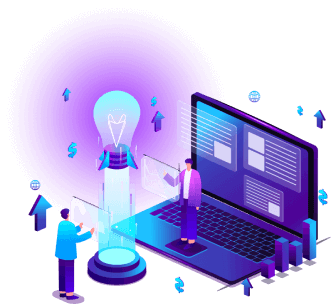Unlocking Efficiency: Digital Loan Origination Systems for Today’s Lenders – As the world becomes increasingly digital, traditional lending practices are experiencing a seismic shift. Lenders are tasked with providing a faster, more transparent, and more customer-friendly service. At the forefront of this transformation is the digital loan origination system (LOS), technology that is transforming the ways loans are processed, approved, and disbursed. By improving processes, enhancing accuracy, and boosting the borrower experience, digital LOS systems are opening new opportunities for effectiveness for lenders today.

What is a Digital Loan Origination System?
A digital loan origination system is an end-to-end digital system created to automate and handle the whole loan process, from application to disbursement. Compared to traditional paper-based processes, a digital LOS decreases manual touchpoints, improves workflow automation, and uses data analytics to support credit decisions. A typical digital LOS is made up of modules including customer onboarding, application processing, credit evaluation and risk assessment, documentation, underwriting, compliance verification, and loan approval. Whether easing personal loans, mortgages, automobile loans, or small business loans, digital LOS systems enable lenders to react instantly to market pressures while adhering to regulatory compliance and supporting the requirements of borrowers.
Reasons Lenders are Shifting Towards Digital Loan Origination Systems
Speed and Scalability
A key benefit of digital loan origination systems is their speed. Traditional loan origination systems are frequently slow as borrowers and lenders spend days and weeks going back and forth over emails, getting and sending documentation, and taking time to see documentation manually. A digital system significantly reduces the turnaround time and permits both lenders and borrowers to cut out the slow process of getting and sharing documents in person. Borrowers can now apply online, upload needed documents via a secure portal, and see their status in real time. For lenders, processing more applications in less time translates to throughput and scalability. With automation to reduce bottlenecks, institutions can boost production without enhancing resources at the same rate.
Customer Experience
Today’s borrowers hope to be satisfied quickly, and they are accustomed to flawless digital experiences in every other sector. Lending is no different, and digital loan origination systems can meet those hopes. Intuitive customer interfaces, continued access to the applicant, real-time updates on status, and immediate decision-making make for happy and satisfied borrowers. Digital loan origination systems go a step further and offer features like e-signatures, secure digital uploads for documentation, automated processes, and automated notifications for the borrower. Once a boring experience, customer satisfaction can be developed via a user-friendly digital experience.
Accuracy and Risk Reduction
Whenever processes depend on a manual approach, there is always a chance of human error, misfiling documents, entering data incorrectly, and executing blinded evaluations can all introduce risk to the lending environment. A digital LOS can help eliminate these risks using validation checks, automated workflows, and standardized underwriting rules. Many digital LOS combines with IT service providers, which ensures credit decisions are made with right and timely data. This not only enhances risk management but also empowers the honesty of the whole lending process.
Regulatory Compliance and Audit Trails
Trying to keep compliant in a quickly transforming regulatory landscape can be hard for lenders. An effective digital LOS offers embedded regulatory compliance features for institutional lenders to help them stay per local and international government regulations, including anti-money laundering (AML), know your customer (KYC), and data privacy. Automated audit trails of any actions taken in the system, from loan application to approval, track and document the lending process. The audit trail contributes notably to transparency to help lenders throughout the audit process while allowing lenders to manage trust with their different borrowers.
Making Decisions Using Data
Loan origination systems create endless amounts of data, as every interaction is recorded electronically. Lenders can mine this data for insight into borrower behavior, trends in applications, risk characteristics, or operational performance. Analytics dashboards, machine learning credit scoring, and predictive modeling can be added on top of the LOS to make better decisions, refine credit policies, and find new lending opportunities.
Key Features of an Innovative Digital LOS
Automated Underwriting Engine – Makes credit decisioning quicker, using configurable rules and risk models.
Document Management System – Digitally gathers, validates, and stores customer documents.
Workflow Automation – Automates tasks and approvals to reduce cycle time and errors.
Third-Party Integrations – It integrates flawlessly with credit bureaus, fraud detection systems, e-signature services, and much more.
Dashboards and Reporting – Gives real-time insights for better decision-making.
Customer Communication Tools – Send automated alerts through SMS, Email, or application notifications.
Challenges and Considerations
Even though there are many benefits to moving to a digital LOS, some challenges may arise –
Complicated implementation – The adoption of a digital LOS may include integration with legacy systems and changes in present processes.
Change management – Employees must be moved to new tools and workflows.
Data security – Because of the sensitive nature of financial data, a digital LOS must have security included in its design.
Vendor selection – To choose the right solution, lenders will be required to assess different areas related to compliance, customization, scalability, and support.
To address the challenges, lenders will be required to develop a clear roadmap for digital transformation that recognizes stakeholders across the company and identifies possible technology partners.
The Future of Loan Origination
The arrival of digital LOS will continue. Emerging technologies will reshape the loan origination space. AI can replace traditional credit scoring models, blockchain can diverge the data without a paper trail, and open banking APIs offer real-time access to a loan applicant’s financial data for decision-making purposes.
Conclusion
As competition increases and clients demand more from lenders, those that adopt digital loan origination systems will be positioned to lead, innovate, extend, and flourish in a competitive landscape of financial services for the next generation.
FAQs
What kind of lenders benefit from using a digital loan origination system?
Digital loan origination systems benefit lenders, including banks, credit unions, fintechs, mortgage lenders, and microfinance. Systems can be configured to support many loan facilities, including personal loans, mortgages, auto loans, and SME lending.
Is a digital loan origination system acceptable for processing sensitive borrower information?
Yes, popular and established digital loan origination system platforms incorporate advanced security features, including data encryption, access security, and ongoing security audits to ensure sensitive borrower details are protected and regulated.
How long does it take to execute a digital loan origination system?
The timing depends on the complexity of the digital loan origination system, integrations, or capability to tailor depending on the clients. Deployment can happen in a few weeks to various months. However, most cloud-based LOS providers claim they provide some option for quick deployment.








